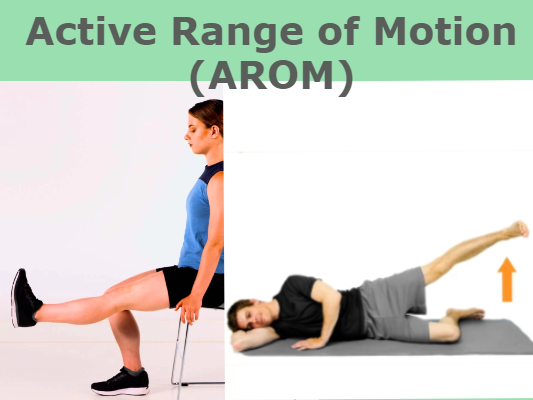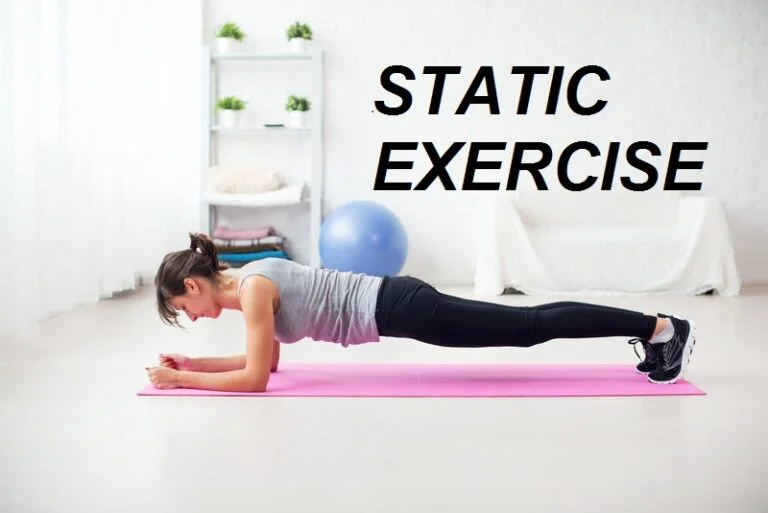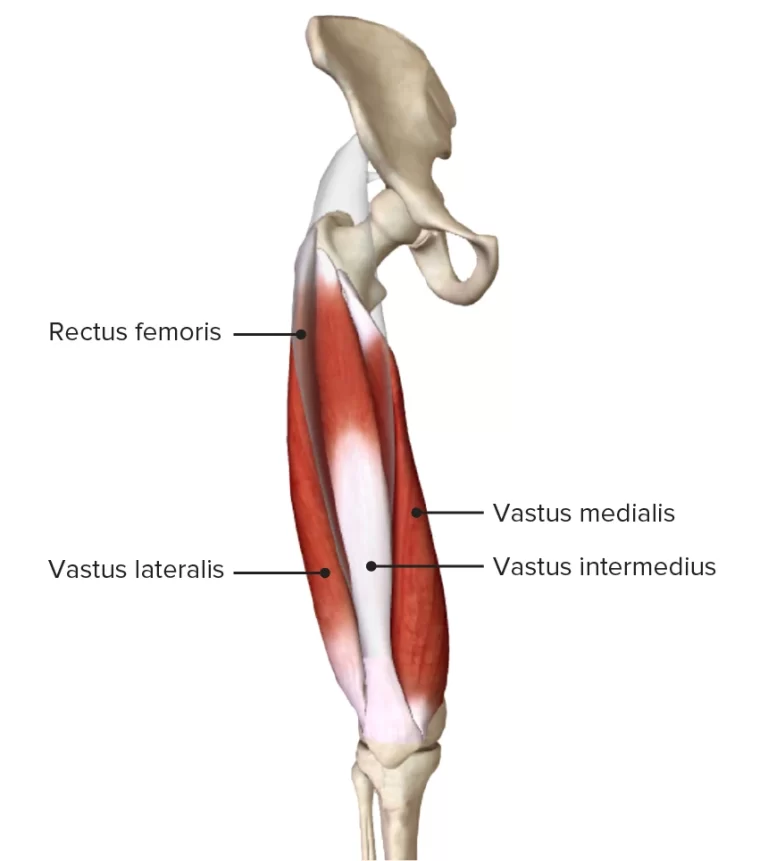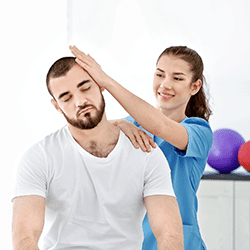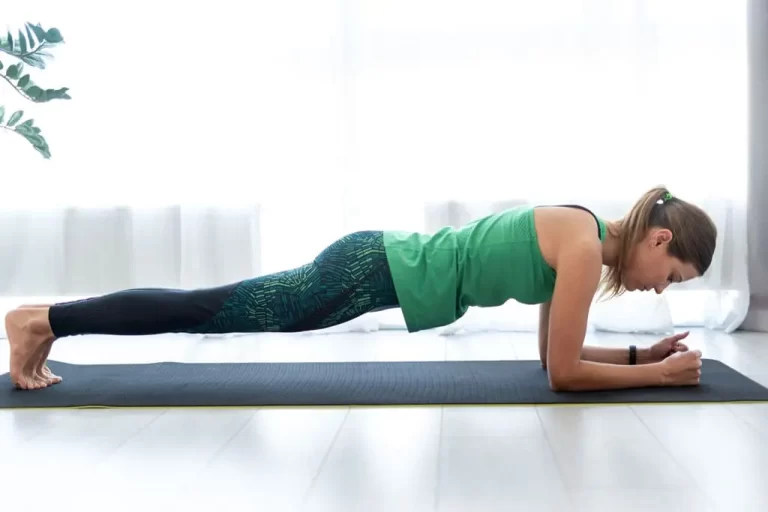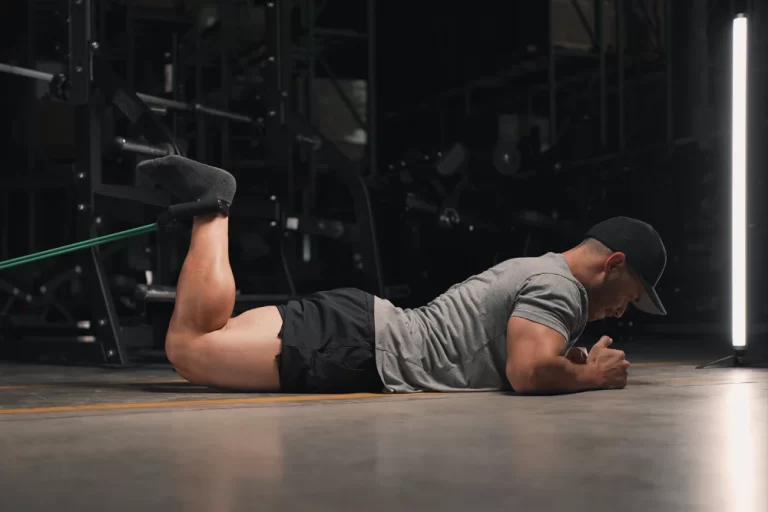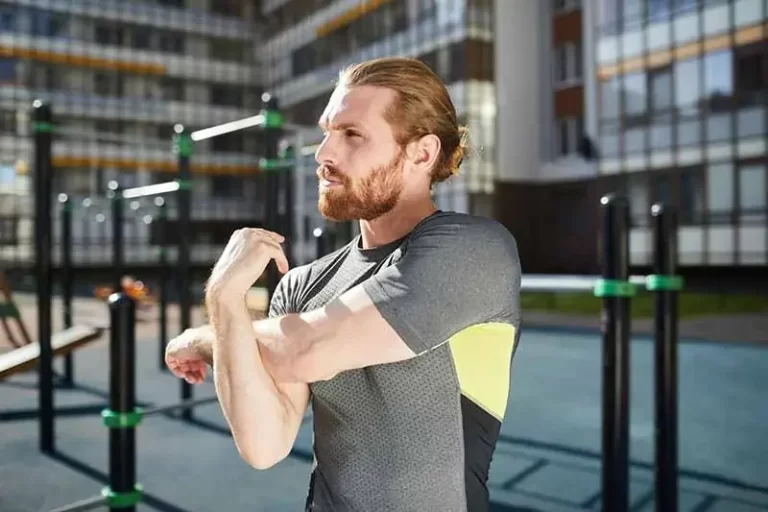Active Range Of Motion (AROM) Exercises
Introduction
Active Range of Motion (AROM) exercises are a fundamental component of physical therapy and fitness regimens, aimed at maintaining or improving joint flexibility and muscle strength.
They are the most popular kind of range-of-motion exercise, and their goals are increased strength, flexibility, and joint function.
Any joint in the body, including the shoulders, elbows, wrists, hips, knees, and ankles, can benefit from AROM exercises. They are widely employed in physical therapy to aid with patients’ post-operative or injury recovery.
Exercises using AROM come in a wide variety. Typical instances include the following:
- Arm rotations
- Leg swings
- Turns of the neck
- Shrugs of the shoulders
- circles around the hips
- Rolls of the ankle
Those who have had surgeries, accidents, or other conditions that limit joint mobility are often advised to perform these exercises. People who want to increase their overall physical fitness and prevent future illnesses can benefit from AROM workouts.
The main goals of AROM exercises are to preserve or restore normal joint function and to increase flexibility. Actively moving the joints during exercise helps to increase blood flow, strengthen surrounding muscles and tendons, lessen stiffness, and increase flexibility.
AROM exercises can be performed on the body’s joints, including the shoulders, elbows, wrists, hips, knees, and ankles. The range of motion may be limited at first, depending on the individual’s condition, but with repeated use, it will gradually increase.
Range of motion(ROM)- types
- Passive range of motion
- Active-Assisted Range of Motion
- Active range of motion
What is the Active Range of Motion (AROM)?
It is frequently the patient’s choice to consciously synchronize contraction, control, and movement. Your muscles can be used to move a section of your body in this location. They operate independently of outside help.
Active range of motion refers to the movement of different body parts when you use your muscles. When bending the elbow, for example, the biceps should be flexed (shortened) and the triceps released simultaneously. Your level of independence in completing this activity is evaluated by Active ROM.
Features of Active Range of Motion Exercises
Active range of motion exercises can be used to work on any joint in the body, including the neck, shoulders, elbows, wrists, fingers, hips, knees, ankles, and toes. Active range of motion exercises can be incorporated into a regular exercise regimen to maintain or improve overall joint mobility.
Three planes in AROM:
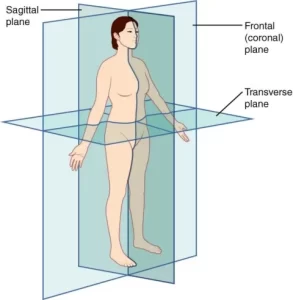
- Sagittal plane
- Front plane
- Transverse plane
Difference between active and passive exercises
Active exercises:
- Without assistance, the patient participates in active activities on their own.
- It can help maintain or improve joint mobility, lessen muscle atrophy, improve balance and coordination, and reduce inflammation, swelling, and pain in the joints.
- These exercises can be done sitting or standing, depending on the joint being worked.
- It can be done to maintain or improve joint mobility as part of a regular workout regimen.
Passive exercises:
- It can help maintain or improve joint mobility, lessen muscle atrophy, improve circulation, and reduce pain, edema, and inflammation in the joints.
- Passive exercises are used in physical therapy programs to help patients heal from injuries or surgeries.
Regarding the active range of motion training.
Observe the exercise guidelines that your therapist has given you. Engage in regular exercise, or as recommended by your physician. Perform the exercises in a coequal order each time. Move from head to toe to help you remember the techniques more quickly. First, extend your neck. Move slowly, evenly, and gently. Avoid making quick or jerky movements. Stop if you have pain. Regular exercise can help lessen pain over time.
Benefits of active exercises
- lessens the rigidity of joints
- Encourages cooperative movement
- Increasing blood flow
- Increases physical flexibility
- Enhances general physical fitness
- Maintaining proper posture improves balance and coordination.
- Let go of the muscles
Risks of active exercises
- Although there aren’t many risks associated with active range of motion exercises, it’s important to perform them correctly to avoid injury.
- Concerns include joint soreness brought on by extremely difficult movements, overuse injuries, and muscle strains.
- If you have ever been injured in the past, you should refrain from overdoing things. It is best to see a medical specialist or physical therapist before developing any training plans.
Contraindications of active range of motion exercises
- Edema or recent injuries
- severe instability or pain in the joints
- Numerous conditions, such as arthritis and osteoporosis
- Past injuries: These might exacerbate the illness and result in terrible pain.
Active range of motion exercises examples
- Neck exercises:
Start position: You can begin by sitting or standing. Kindly go to the front. Move your head left and right, tilting it forward and backward. To see the ceiling, tilt your head back as far as it will go.
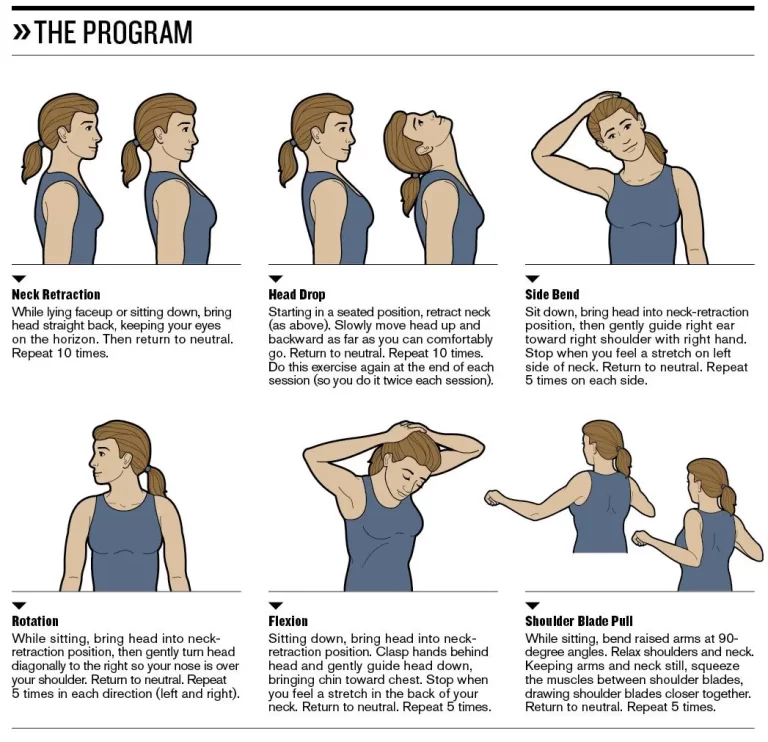
Retain a shoulder-to-ear separation. Maintain a steady shoulder.
Head rotation: Refrain from letting your shoulders hang down below your chin. Examine the far horizon.
- Shoulder and elbow exercises
Starting position: Either standing or sitting at first. Straighten your arms and place them at your sides. Facing inward, your palms should be toward your body. If you are sitting down, you should use a chair without armrests. Make an effort to elevate your arm so that it touches your ear on the inside. Please go back as far as you can. Return to the starting point.
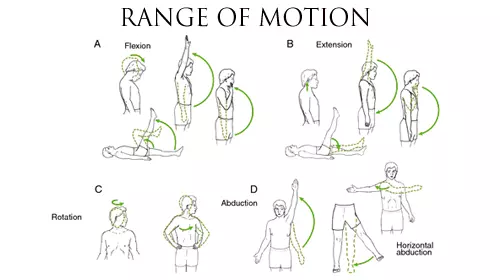
Shoulder rotation: As though you were shrugging, rotate your shoulders so they are raised toward your ears. Pull your shoulders back. then release one additional. Make little, circular movements with your shoulders.
Elbow bending The elbows are curved: Raise your elbows to your palms. Put your fingertips on your shoulder and extend your reach. Raise your arms to retake the starting position.
- Arm and wrist exercises
Position of start: Take a seat to begin. Make sure your wrists are hanging down to the sides freely.
Wrist rotation: Move your hands back and forth to rotate your wrists. Make a circular motion with your hands in the other way.
Hold the same posture, but shift your bent elbow to your side. Hands up, hands down. Place your hands on the floor. extending your hand forward.
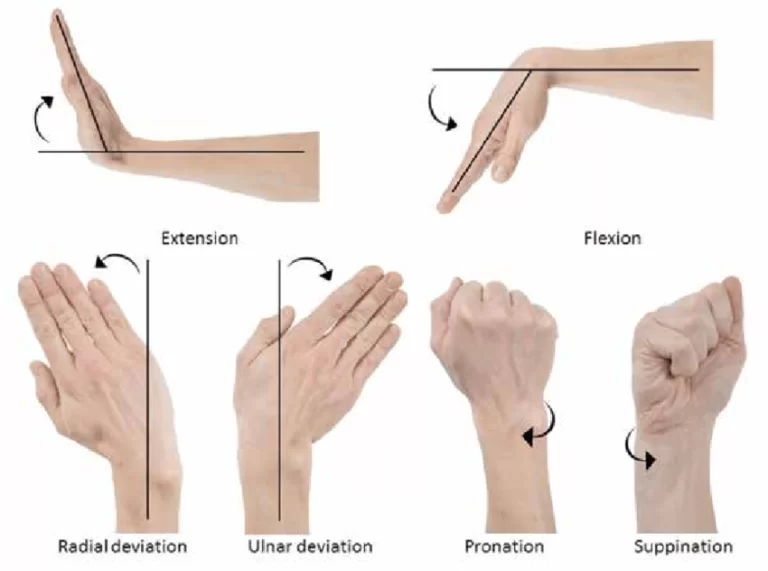
- Hand and finger exercises
Start position: You can choose to sit down or stand up to begin. Place your hand on the table strut’s front.
Finger bend: Your fingers will bend if you clench your fist. After that, unwind and open your hands widely.
Extend your fingers: As much as possible, extend your hands apart. Move your finger around. Finger and Thumb Touch: Using your thumbs, touch the tips of your fingers like you would the pads.
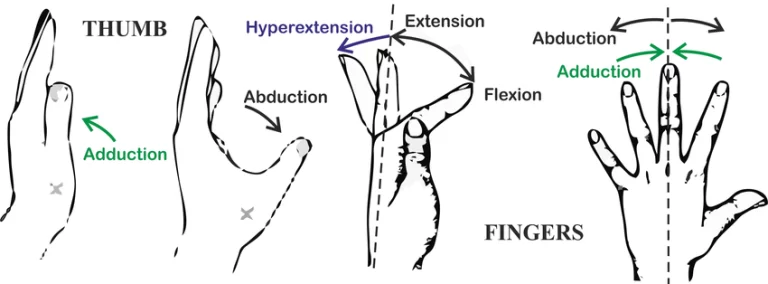
- Hip and Knee Exercises
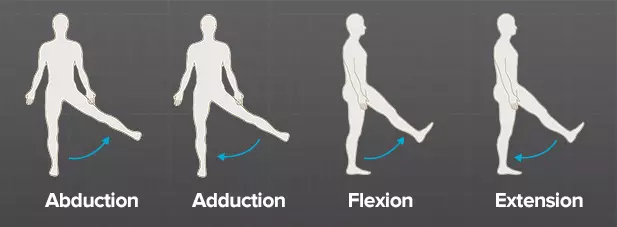
Start position: If you or a loved one has had hip surgery or an injury, only perform hip exercises as directed by your doctor or physical therapist. With your feet spread wide, take a seat on the bed.
Toes pointing during hip lifts and squats. Bring your knees as close to your chest as possible by bending them slowly.
Leg movement from side to side: Bend your legs so that your toes point upward when you do this. Stretch your leg as far to the side as possible.
Place your flat feet on the mattress and rotate your legs inward and outward. As you turn your feet toward the center, make sure your big toes make contact with the bed.
This is known as bending the knee. Your heels should be more in line with your buttocks.
- Ankle and foot exercises
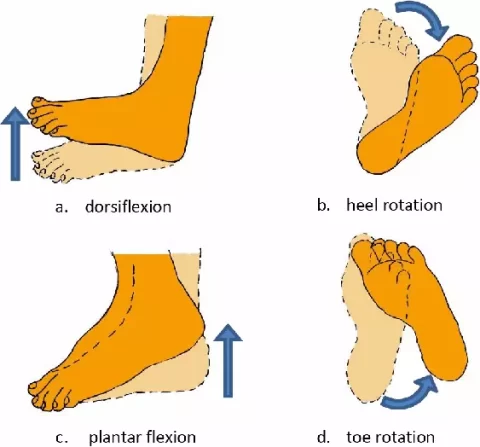
Ankle bend: Keep your toes on the ground and raise your heels as high as you can. Remove your heels. Next, raise your toes as high as you can without taking your heels off the ground.
Ankle rotation: You can rotate your ankles by raising your feet off the floor. Swivel your ankle in a clockwise manner. Next, make a circular movement with your ankle in the other way.
Toes bent: Your toes should point in the direction of your foot’s bottom. Correct them. Roll up to the ceiling. then relax once more.
Spread of the toes: Spread your toes. Give them back.
Summary
- Exercises involving active range of motion (AROM) are crucial components of any fitness program. Strength, flexibility, and joint function can all be enhanced by them. AROM exercises are also frequently utilized in physical therapy to aid in patients’ post-operative or injury recovery.
- Any joint in the body can benefit from AROM exercises, which are also reasonably simple to master. AROM exercises should, however, be warmed up before beginning. You should also pay attention to your body and stop if you experience any pain.
- AROM workouts are a secure and efficient approach to raising your general level of health and fitness.
FAQs
Why is the active range of motion limited?
A joint is said to have a limited range of motion if it cannot move completely and effortlessly in its typical way. A mechanical fault with the joint, edema surrounding the joint, muscular stiffness, pain, or illness can all restrict motion.
Why is having an active range of motion important?
Every joint in your body is supported by bones, ligaments, muscles, and tendons, which allow each joint to move within a predetermined range.
How many different kinds of physical activity exist?
Each offers a unique set of advantages. Engaging in one type of exercise can enhance your capacity to perform the others, and diversity lowers the likelihood of getting bored or hurt.
How does one use an active range of motion?
Exercise helps lessen pain, maintain joint flexibility, and enhance strength and balance.
Active movements: what are they?
Repetition of active movement, which necessitates muscle activation to produce and control any movement, is known as active exercise.
What is tested for by active ROM?
Range of Motion in Action
Features of the range of motion that is active: carried out on the patient’s own initiative. The ability to contract, regulate, and synchronize a movement is voluntary.
What does active ROM aim to achieve?
Maintaining or improving muscle strength, preserving joint mobility, promoting blood circulation, and preventing deformities are the goals of range of motion (ROM) exercises.
Active range of motion tests: what are they?
You will also be able to observe the range of motion that your patient has in a particular joint.
What is the purpose of AROM?
Furthermore, by observing the degree of freedom a patient has in a particular joint, we can look for compensatory ways to achieve that mobility.
Which three types of ranges of motion exist?
The three main classifications of range of motion passive, active, and active are based on the patient’s freedom of movement in the joint.
What benefits might AROM exercises offer?
Cut down on pain and numbness. keeps muscles from atrophying and contracturing. promotes the formation of synovial fluid to keep tendons flexible and healthy cartilage.
Which exercises target active range of motion?
The objective of physical therapy is to enable the patient to exercise on their own, even though it may not be possible to perform these exercises at first.
References
- Patel, D. (2023, September 14). Active Range Of Motion (AROM) Exercises. Samarpan Physiotherapy Clinic. https://samarpanphysioclinic.com/active-range-of-motion-arom-exercises/

